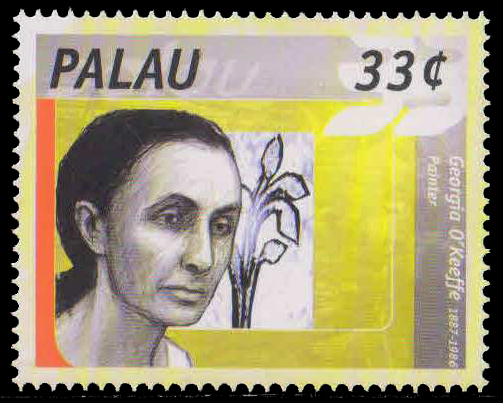“I found I could say things with color and shapes that I couldn’t say any other way… things I had no words for” Georgia O’Keeffe
“A sister can be seen as someone who is both ourselves and very much not ourselves – a special kind of double.” Toni Morrison
 Georgia O’Keeffe is one of my favourite artists. Over the last few days I’ve been looking at her art and photos again, and also, reading about her. In one quote she says: “I made you take time to look at what I saw and when you took time to really notice my flower, you hung all your associations with flowers on my flower and you write about my flower as if I think and see what you think and see—and I don’t.” It is so true that when we interact with others’ art much of our own meaning making and associations are imposed on the image or object that we see, which is natural and the way it is meant to work, as long as, we don’t insist that our own interpretations and reactions are necessarily the same of those of another. Art is multilayered and one simple image can become a metaphor of something else or tell a hundred stories or come to represent so many things both for the creator and the observer.
Georgia O’Keeffe is one of my favourite artists. Over the last few days I’ve been looking at her art and photos again, and also, reading about her. In one quote she says: “I made you take time to look at what I saw and when you took time to really notice my flower, you hung all your associations with flowers on my flower and you write about my flower as if I think and see what you think and see—and I don’t.” It is so true that when we interact with others’ art much of our own meaning making and associations are imposed on the image or object that we see, which is natural and the way it is meant to work, as long as, we don’t insist that our own interpretations and reactions are necessarily the same of those of another. Art is multilayered and one simple image can become a metaphor of something else or tell a hundred stories or come to represent so many things both for the creator and the observer.
Georgia O’Keeffe came from a family of known and unknown artists. Some of her sisters and two grandmothers engaged with art and painting. One of her sisters also became known as an artist. Ida Ten Eyck O’Keeffe started off as a printmaker, studied art, worked as a nurse and arts teacher, and painted around seventy canvases, according to Wikipedia, during her lifetime. In 1974 she was featured in a solo exhibition entitled: “Ida O’Keeffe: Escaping Georgia’s Shadow”. She seems to have had similar artistic capacities to her older sister and yet unlike her, she did not achieve wide reclamation or manage to find the time and resources to dedicate herself to art. What were the complex dynamics and contributory factors that resulted in such different destinies for the sisters? Through reading we get a glimpse of some of the variables, but there is so much that cannot be known about another’s life or relationships.

In his book, The Pecking |Order: A Bold New Look at How Family and Society Determine Who We Become (2005), sociologist, Dalton Conley, explores the reasons of financial, educational and social inequity among adult siblings, the inequity within the family, and a family’s ‘pecking order’ reality that contributes to disparities between adult siblings. We all like to think of the family as a haven where all the children start on equal footing, but reality is often messier. Dalton Conley supports that the family is not a haven in a harsh world, but it is part of the world, and competition and inequality (or not) start at home. It is natural since families are embedded in sociopolitical contexts and are open to societal influences and survival pressures. He suggests that genes and nurturance do not always adequately explain socioeconomic success and that the issue is way more complex. The pecking order within the family unit is further influenced by the family’s sociocultural context and particular events of trauma, illness, divorce, death of a parent and other difficulties that may arise over different periods, and which may not be the same for all siblings. Then there is birth order, nature and nurture. So, there is always a combination of variables to consider.
